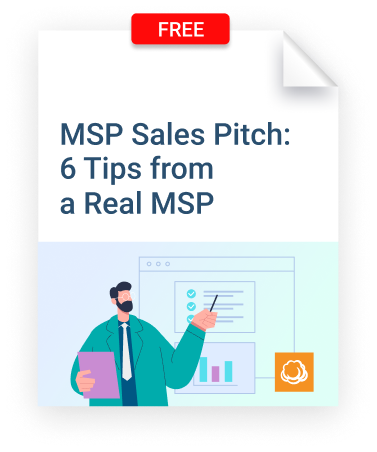No one enjoys making a cold call. Yet, people associated with MSPs have no escape from it. Cold calls just continue to be an effective strategy for MSPs despite the occasional horrendous feedback or experience.
Now, to take away some of the resistance associated with it, experts use many other terms to describe cold calls. Discovery calls, client prospecting calls, and so on. That hardly changes the basic characteristics or alters the intention.
Cold calls remain what they are: unsolicited calls to check out a prospective client. This basic feature brings with it many of the associated characteristics that make cold calls so detested an activity. Facing objections is one of them. And those objections can be of many types.
Avoid Scheduling Faux Pas
The timing of your calls considerably impacts the outcomes. Avoiding typical scheduling errors to amp up your conversion rates.
Most salespeople make their calls in the last month of a quarter. Don’t be a part of the herd. Schedule your calls from the last week of the first month and beat your competitors.
Why the last week of the first month? That’s to grant your potential client some time to recover from the onslaught of cold calls in the previous month, that is. You will improve your chances of getting a better response just because you’re connecting at a time when your prospects have more mind space.
Target the first two hours of the workday to make your cold calls. You’re much likelier to find your prospects in a receptive frame of mind during these hours.
Even after taking these precautions, there will be snubbing responses. We euphemistically refer to them as objections. Here are some tips for dealing with them.

“I Don’t Have the Time to Talk to You Now”
That is one of the most likely rejections you may hear. But it may not really be the dead end.
You could always respond with: “I totally understand. When would be a good time to call you back please?” It is totally possible that the recipient is simply saying this to avoid talking to you. By asking for a time, you at least stall the immediate hanging up. The next response could well be, “I really don’t know that now.”
Don’t give up yet. You can always revert with: “Fair enough. Could you please tell me which part of the day or week is comparatively better for you?”
The trick is to be ready with the next question immediately before the person on the other end of the line can hang up. The other thing is, practice asking questions that don’t allow yes/no responses. That’s critical to try and engage the call recipient in a conversation, no matter how brief. It might have a different framing, of course: “Now’s not a good time.” It’s the same thing, but you could articulate your responses differently. “You mean, to talk at all, or to talk about IT solutions?”
There could actually be a whole different possibility in the “now’s not a good time” refrain. If you’ve done your research well, this might just be the space where you throw in, “You mean everything that’s happening after the recent discovery of the fraud by one of your trusted employees? I totally understand.”
In such a scenario, you actually have the perfect entry line. “Wish I had called you before. We provide our clients with super-efficient fraud detection software, you know.”
The idea is not to write an imaginary script here. Scripts on tutorial websites hardly ever play out exactly like that in real conversation. We trust you to write your own script around the few tips we offer.
So, four takeaways so far: First never give up with the first snub. Second, ask questions that don’t permit yes/no answers. Third, keep your next question ready to throw it in before the call receiver gets a chance to hang up on you. Fourth, and most important, sniff out the opportunity in every objection.
“We Already Have That”
This is another of the commonest objections you will come across as you make cold calls to sell your MSP: “We already have that arrangement.”
With the previous three tips fresh in your mind, you know you can’t just say, “Oh, I see! Nice talking to you anyway.” More importantly, this one actually needs you to find out some details. That will determine your next course of action. You might just discover that the company is too small to be viable for you. More on that later. Let’s get the first bit out of the way first. How do you keep this conversation going?
There are many things you can say, but your aim is to find out what arrangements they have in place. So, you could respond with: “You mean you have an internal IT team? Or, do you mean you have a different MSP in place?”
Notice that the questions are still open-ended, to invite conversation. That’s one never-to-forget cue where cold calls are concerned. Now, just suppose the next response is: “Neither actually.” Where do you go from there?
“Do you mean you only call in someone when you need? Or, is there one internal person who looks after all the needs?’
“Yeah, we just call a local IT guy when we need him.”
That will be a good opening for you actually. You can shoot right back with: “So, you’re not sure when your company did the last overall health check for your IT systems? In these days of data fraud and cyber-crimes, that’s a major risk, you know. We do a wholesome health check for all our clients’ IT systems once every 3 months.” You might just end up creating an opening there.
Suppose the response is: “We have an internal person who doubles up as the IT expert.” You need to engage the person on the other side in a conversation to figure out the number of computers they have. You might discover that they are too small to be viable for you.
If the response is affirmative about an internal IT team, do not read this as the end of the road. You can always ask: “And how often do they need to seek external support? Could I explain how we’re helping several companies with their internal IT deal with the tech issues they’re not familiar with?” If they are already working with an MSP and seem happy with them, do not immediately cross this contact out. And do not end the phone call.
“How often do you overhaul/upgrade your systems? We do that once every six months for all our clients. It is not safe to reduce the frequency.”
Or you could be a little more dramatic and ask: “So, you are sure that you will suffer like your competitor XYZ did, when 60% of their computers were affected by a lesser-known virus?” The focus is on getting your prospective client to talk a little about their current MSP. You need to learn something about them to showcase why and how you are better.
Remember that sometimes, there’s just no opportunity. For instance, your prospect’s response could be: “Yes, we do have a contract with an MSP. My brother-in-law runs that.” Now, this is when you say, “Ah, I see. Do let me know if you’d want a look at our price catalog anyways. Nice talking to you.” Hang up and move on.
Further reading MSP’s Guide to Targeting Prospects with Internal IT
Nothing Else Should Stop You
Other than your prospective client’s current MSP having a close relative at the helm, you should not actually give up on any other count. Do remember that the first call is really not a selling call. That’s not your target and should not be your pitch.
The first cold call really is a discovery call: to check out if there is a synergy between what the client needs and what you have to offer. It is also your chance to establish some degree of rapport with your prospective client.
That will save you from making another cold call. You will be able to transfer this one into a warm calling scenario.
So, focus and speak. The target is to keep the conversation going until you get a firm action point. That could even be a time and a date to telephone. If you can get that out of the first cold call, you’d have achieved something. And for that, you need to work around objections, not balk at them.






